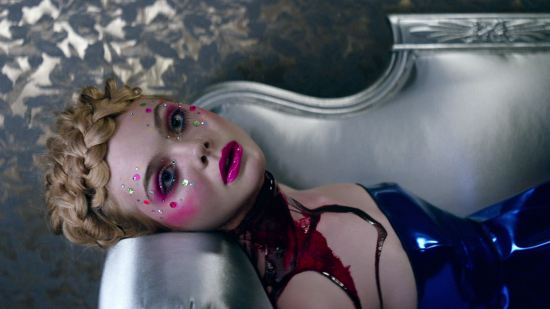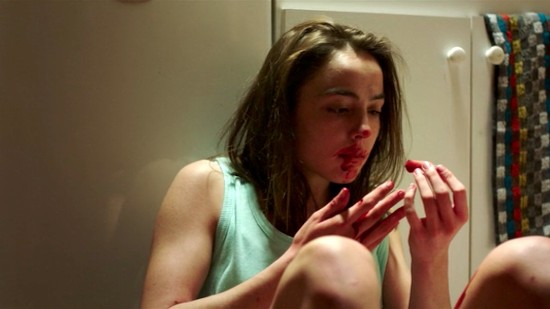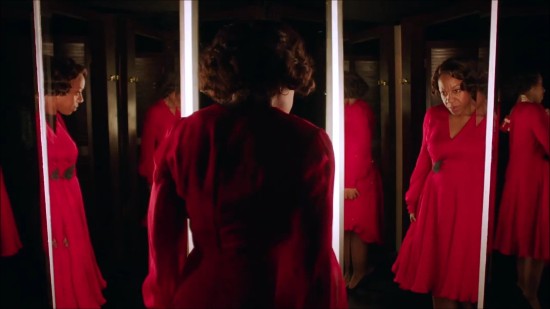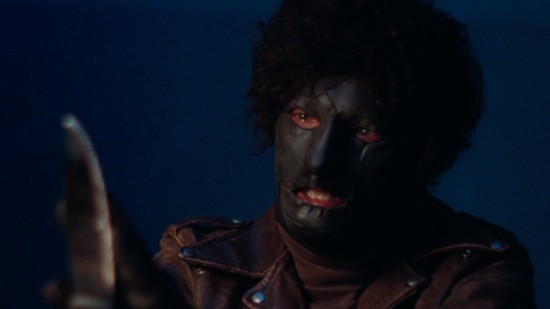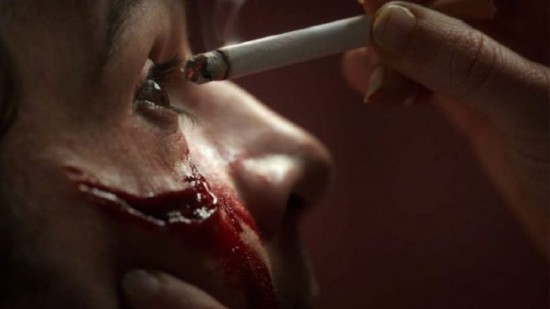Neo-Giallo: A Beginner’s Guide
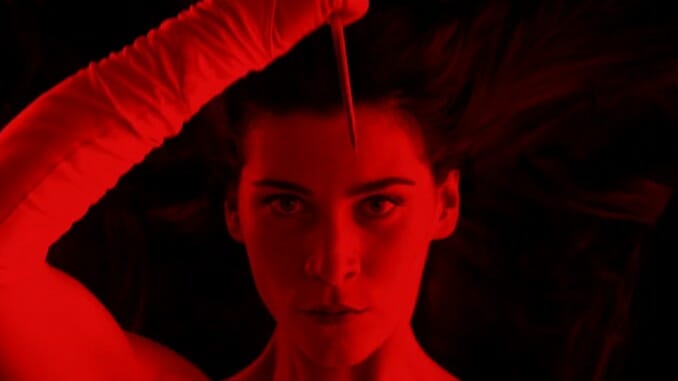
Is the giallo making a comeback? Now in theaters and streaming on HBO Max, James Wan’s exuberantly unhinged Malignant follows a young woman (Annabelle Wallis) grappling with past trauma as she experiences terrifying visions of a mysterious killer slaughtering those in her orbit. At least initially, that premise is about as giallo as it gets; Wan has been upfront about his desire to put a personal twist on this Italian horror genre. And though Malignant ultimately tears off in directions equally influenced by ‘90s Dark Castle joints and the trashy mad-science kicks of ‘80s maven Frank Henenlotter, Wan is only the most recent in a long line of modern horror filmmakers to claim gialli—with their psycho killers, ornate aesthetica and sexualized violence—as a major influence. Neo-giallo is here to stay.
Prano Bailey-Bond’s retro-styled Censor follows a film censor in ‘80s London who, upon watching scenes in a “video nasty” that uncover her own repressed memories, falls down a rabbit hole of psychological instability so vivid and dreamlike that it suggests Italian goremeister Lucio Fulci’s 1981 masterpiece The Beyond. Maxi Contenti’s just-released The Last Matinee stages its slasher carnage inside a Uruguayan movie theater as a madman works his way through unsuspecting ticket-buyers—takes its cues most from Lamberto Bava’s 1985 exploitation classic Demons. The film is overrun with visual references to gialli and creates inspired images of its own, like smoke swirling out of a slit throat.
Still ahead this year is Edgar Wright’s Last Night in Soho, in which another young woman (Thomasin McKenzie) experiences another set of visions—psychically linking her to an aspiring lounge singer (Anya Taylor-Joy) in London’s swinging ‘60s—that begin as dreams before spiraling into a violent nightmare. And even before that reverent throwback hits theaters, audiences will have seen Julia Ducorneau’s Titane, which won her the Palme d’Or at the Cannes Film Festival; fusing bold colors to tactile metallic sounds, it’s been referred to as a neo-giallo by some critics.
But what makes a film a neo-giallo, or a plain ol’ giallo for that matter? Some fans insist that the original term only applies to a class of pulpy mystery-thrillers that emerged from Italian cinema in the 1960s and ‘70s, often made on the cheap and awash in splashes of lurid gore and titillating nudity. After all, the word giallo means “yellow” in Italian; it came to signify a specific genre due to the popularity of cheap paperback mysteries with yellow covers, first published in Italy by Mondadori in the 1920s, that veered toward the scuzzy and salacious.
Italian filmmaker Mario Bava single-handedly established the template for giallo cinema with 1963’s black-and-white The Girl Who Knew Too Much, about a young woman terrorized by visions of murder, and 1964’s Blood and Black Lace, which followed a mysterious killer as he stalked and slaughtered models in a Roman fashion house. A masked butcher of young women, his black leather gloves wielding a glinting knife, soon became the giallo’s defining symbol, and the opulent style with which films exploring such figures were made—especially once Dario Argento emerged in 1970 with The Bird with the Crystal Plumage—further distinguished the giallo as a uniquely aestheticized, textural genre.
Classics such as Sergio Martino’s Your Vice Is a Locked Room and Only I Have the Key (1972) and All the Colors of the Dark (1972), Lucio Fulci’s Lizard in a Woman’s Skin (1971) and Don’t Torture a Duckling (1972), and Argento’s Deep Red (1975) and Suspiria (1977) are remembered as much for their unusually bright colors, desolate urban settings and puzzling camera angles as they are for their focus on sex, death and murder. The plots of gialli were rarely coherent and often inclined toward dream logic that better suited their sensory overload; even if complicated yarns involving confused eyewitness accounts, reluctant detectives and fiercely repressed traumas were commonplace in the genre, these storylines often spun out into crimson, orchestral fantasias.
In weighing the cultural significance of gialli, it might be helpful to consider them proto-slashers, given the sizable influence they exerted over American slasher films of the ‘70s and ‘80s. Bava was especially influential here: His 1971 feature A Bay of Blood exemplified his approach to emphasizing sex and gore over story, but Blood and Black Lace was by that time considered a classic and had already inspired filmmakers stateside to follow his lead. As with slashers, not all elements of gialli have aged well. There’s an inherent misogyny to the genre, with its fetishistic treatment of violence against women, and its depictions of mental illness and gender fluidity are rooted in a certain neurotic repulsion.
Though forever linked to that bygone school of Italian horror filmmaking, the giallo lives on most today through postmodern genre practitioners, who see the narrative tropes, stylistic excess and technical opulence of gialli as a palpable atmosphere to selectively indulge or anatomize. Preserving the look and feel of the giallo but filtering out its problematic elements by letting in new voices, neo-giallo has in more recent years become its own kind of animal, concerned at once with replicating the genre’s visceral stimulations while interrogating their construction.
By reveling in the genre’s iconography but also twisting it into fresh, frightening, often self-critical shapes, filmmakers like Hélène Cattet and Bruno Forzani, Yann Gonzalez, Peter Strickland and Julia Ducourneau are engaging in an open-ended conversation about gialli, what they meant and how their most salient themes and striking images can be reproduced in a modern context.
Here’s our beginner’s guide to the neo-giallo:
![]()
Amer (2009)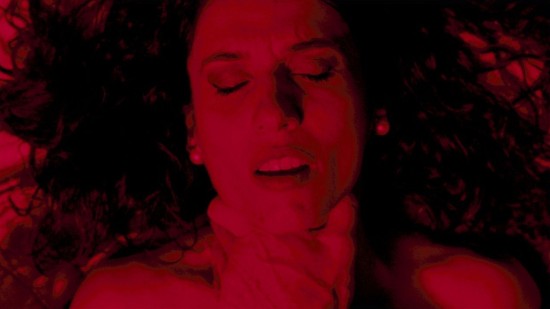
Belgian duo Hélène Cottet and Bruno Forzani first made the leap to feature-length storytelling in this exquisitely unnerving 2009 gem, which they’ve described as a pointedly postmodern take on the giallo. Told across three color-saturated vignettes, Amer charts the gradual development of Ana (Cassandra Forêt, then Charlotte Eugène Guibeaud, then Marie Bos) through childhood, early adolescence and adulthood. Simultaneously, Amer positions Ana within the sexualized and victimized archetypes women were made to embody in old-school gialli, exploring and deconstructing the genre’s voyeuristic proclivities while letting us share the perspective of the would-be prey. Doing away with a discernible plot in order to focus on heightening atmosphere, the pair are arguably pursuing a more artistically pure and creatively distilled vision of the giallo. Through Amer, with its constant state of ethereality and psychedelic sensation, Cottet and Forzani first emerged as genre stylists too enamored of the giallo’s sensory overkill to make anything other than stupefyingly vivid tone poems.
Berberian Sound Studio (2012)
Set behind the scenes of a sleazy Italian slasher, Peter Strickland’s Berberian Sound Studio tracks the mental deterioration of its sound engineer, the mild-mannered Gilderoy (Toby Jones), as he concocts all manner of unsettling audio accompaniments to match the project’s horrifying visuals. Before long, Gilderoy’s grip on reality begins to slip, and he’s drawn into the hypnotic atmosphere of the film in question: A (fictional) ‘70s curio called The Equestrian Vortex, about witchcraft at an all-girls riding academy. While this film-within-a-film goes unseen, Strickland turns the titular sound studio into its own analog circle of hell, tape loops running everywhere and machines looming ominously in the background as disembodied shrieks emanate from their industrial amplifiers. As all this might suggest, Berberian Sound Studio is a wonder of aural fixation; the film most forcefully channels the sonic sensations of giallo through a throbbing score of its own (by British indie band Broadcast) that evokes Goblin’s ever-mounting, increasingly hysterical prog-rock soundtracks to Argento classics like Deep Red.
The Strange Color of Your Body’s Tears (2013)
One of the more inscrutable titles in this guide (which is saying something), Cottet and Forzani’s The Strange Color of Your Body’s Tears opens as a man (Klaus Tange) returns home from a business trip to find his wife (Ursula Bedena) missing. Intercut with this sequence are unnerving black-and-white photographs, animated into a stop-motion montage, of a nude woman caressed by a long knife, leaving little doubt as to her fate. In his search, the man encounters an unhelpful neighbor (Birgit Yew), who’s wearing black lace and claims her husband vanishes into the walls through a hole in the ceiling. Set almost entirely inside one Art Nouveau building, the staircases and corridors of which are shifting and labyrinthine as the oneiric, so-baroque-it’s-barely-there plot, Cottet and Forzani’s film proceeds in a free-associating, psychosexual fugue state, its audiovisual concepts swirling endlessly and suggesting one bizarre interlude after another. Though a fetish object like The Strange Color of Your Body’s Tears is perhaps better-suited for exhibition in an art gallery than a movie theater, giallo fans will eat it up like spiked catnip.
The Editor (2014)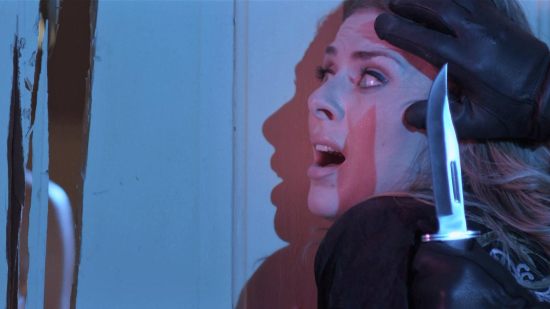
As directed by Adam Brooks and Matthew Kennedy (together billed under the larger banner of their Canadian film production company, Astron-6), The Editor is as much a broad-grinning pastiche of myriad gialli as it is an earnest homage to the genre; on its face, the film is a black comedy, guffawing rather loudly at its own onslaught of gore and stylistic gratuity. Still, there’s no shortage of affection for the forefathers of the giallo to be found in this story of a once-promising editor (Brooks), left one-handed after an accident, who’s suspected of massacring the cast of an Italian horror movie he’s working on. With its rich synth score (composed by Goblin’s Claudio Simonetti), fluorescent color palette, zoom lensing and garish lighting, this is one parody that absolutely looks the part.
-

-

-

-

-

-

-

-

-

-

-

-

-

-

-

-

-

-

-

-

-

-

-

-

-

-

-

-

-

-

-

-

-

-

-

-

-

-

-

-

